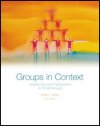The first step in decision making is to decide whether a problem should be
handled by an individual or a group. If one person is truly an expert and the
group is clearly not or if there is a severe time constraint, then an individual
may best make the decision. If the problem is complex or if it is important
for the group to accept the decision, then a group should probably make the
decision. Keep in mind that the decision might be enhanced by social facilitation
of the group. A second step is to decide which agenda will best suit the situation. John
Dewey presents a five-step reflective thinking agenda. These five steps are
(1) What is the nature of the problem? (2) What criteria should be set? (3)
What alternatives might resolve the causes of this problem? (4) What is the
best solution for this problem? (5) What plans will be set in order to implement
the solution? We suggest a sixth step: (6) How will the effect of implementing
the solution be evaluated? The ideal solution sequence focuses on what a variety of identifiable groups
might consider to be their ideal solutions. Its steps are (1) Are we all agreed
on the nature of the problem? (2) What would be the ideal solution from the
view of all interested groups? (3) What conditions within the problem could
be changed so that the ideal solution might be achieved? (4) Of the solutions
available, which one best approximates the ideal solution? The single question sequence offers an alternative agenda. It has as its
focus the identification of issues that will lead to a decision about the major
problem. The steps in this agenda are (1) What is the question whose answer
is all the group needs to know in order to accomplish its purpose? (2) What
subquestions must be answered before the single question can be answered? (3)
Do we have sufficient information to answer the subquestions confidently? (4)
What are the most reasonable answers to the subquestions? (5) Assuming that
our answers to the subquestions are correct, what is the best solution to the
problem? A decision to use a particular agenda is based on certain characteristics
of the task. If the task is difficult, the group may want a relatively complete
agenda. If multiple solutions seem likely, the group may want to engage in some
idea-generation technique. If high cooperation is needed to make a decision
and carry it out, then the group should spend time in step 2 of the reflective
thinking format. If the group is not very familiar with the problem, then it
might choose to map the problem carefully by step 1 of the single question sequence.
If a high level of acceptance of a diversified group is needed, then step 2
of the ideal solution sequence might be important. Vigilant interaction theory suggests that group decision making is enhanced
by the group being thorough and careful (vigilant). Hirokawa recommends the
following sequences of activities: examining the problem, clarifying objectives,
developing available choices, and examining potential consequences. A leader can make the most efficient use of an agenda by publishing it
in advance, tailoring it to the specific problem, allowing the members to modify
the agenda, posting an abbreviated version of the agenda where all can see it,
and using the agenda to help group members check the quality of their decision. Brainstorming, focus groups, nominal group technique, and Delphi are idea-generation
techniques. Brainstorming, nominal group technique, and Delphi are ways of getting
group participation by withholding criticism while members are listing ideas.
Brainstorming is a group technique in that members interact. Nominal group technique
and Delphi do not involve member interaction as the group generates ideas. A
focus group meets to share ideas in response to questions posed by a facilitator.
These questions seek to generate ideas about how people experience a particular
idea, product, or problem. Buzz groups are used to gain input from all the members of large groups.
The group is broken into subgroups of six members, and each subgroup has six
minutes to generate ideas. The leader of the large group gathers the ideas and
presents them to the reassembled large group. Quality circles are decision-making groups found in the workplace. They
are composed of volunteers who deliberate about work problems and are led by
a supervisor who acts as a facilitator. Technology can enhance a group's deliberation. If the members cannot conveniently
meet, then they might interact through a teleconference. If the members are
part of a network, they might use their computers to interact through a group
decision support system (GDSS). The group might use the GDSS in a specially
equipped facility. Both teleconferences and GDSS sessions are most productive
when the facilitator and members know how to use the technology. Groups can make decisions through consensus, compromise, majority vote,
decision by leader, or arbitration. Consensus means that all members find the
decision acceptable. Compromise involves giving up some of what members want
so that the group can agree. Majority vote suggests the decision is made on
the basis of what most of the members want. Decision by the leader means that
the leader listens to the group discussion and then imposes the decision he
or she favors. Arbitration is a method of deciding in which a disinterested
third party hears each position and makes a decision. Each method of deciding
has its advantages and disadvantages and must be carefully considered. | 


 2002 McGraw-Hill Higher Education
2002 McGraw-Hill Higher Education